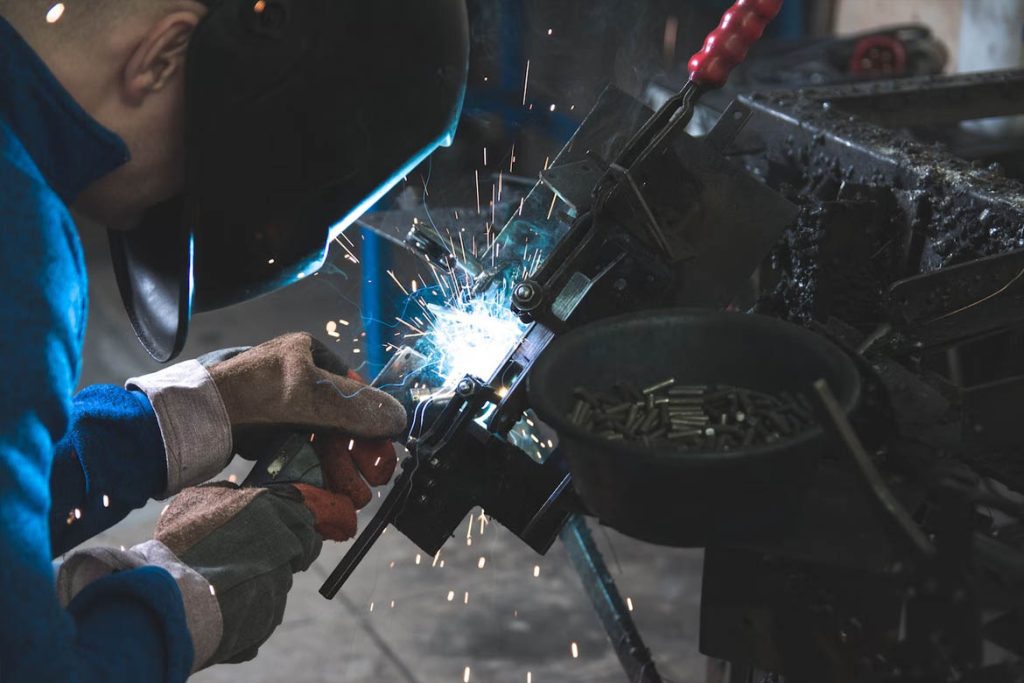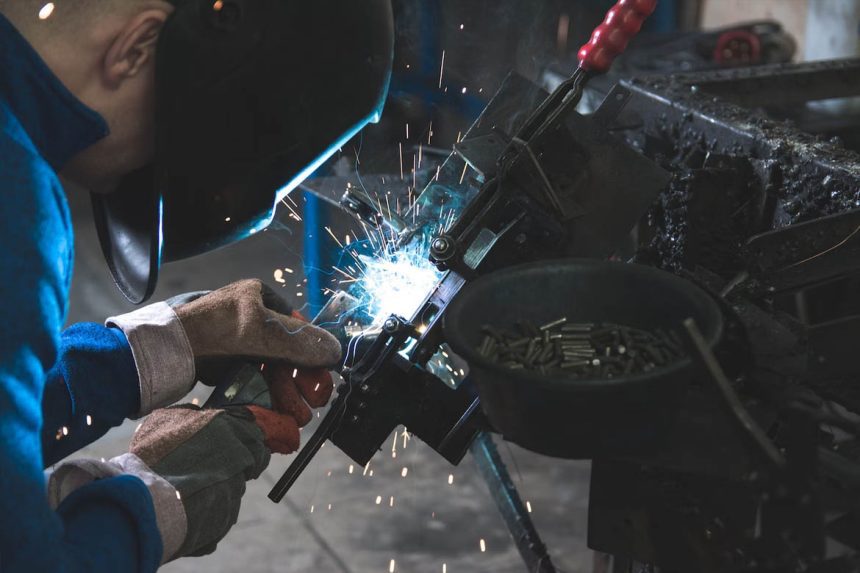Teaching yourself to weld at home can be a challenging but rewarding endeavor. There are various resources available, such as books, tutorials, YouTube videos, classes, and in-person opportunities, that can help you learn the basics of welding. If you’re a beginner looking to start your welding journey, focusing on one type of welding, such as MIG welding, can set you up for success. In this article, we will provide a beginner’s guide to teaching yourself how to weld at home.
Can you teach yourself to weld?
Welding Town
Why Learn How to Weld?
Learning how to weld offers numerous benefits, both practical and recreational. Here are some reasons why you should consider learning this skill:
- Take up a new hobby: Welding can be a fulfilling and creative hobby, allowing you to work with metal and create unique projects and artwork.
- Repair and restore possessions: Knowing how to weld enables you to repair and restore items made of metal, saving you money and extending the lifespan of your belongings.
- Start your own business: Welding skills can be the foundation for starting a welding business, providing you with entrepreneurial opportunities.
- Engage in DIY projects: Welding opens up possibilities for do-it-yourself projects, allowing you to bring your ideas to life and customize items to your liking.
- Practice for a welding career: If you aspire to pursue a welding career, learning and practicing welding at home can help you gain valuable experience and enhance your skills.
- Have fun: Welding can be an enjoyable and fulfilling activity, allowing you to express your creativity and work with your hands.
Different Types of Welding
Before delving into specific welding techniques, it’s important to understand the different types of welding. Here are three common types:
- Flux-core welding: This type of welding utilizes a welding wire with a flux core, eliminating the need for an external shielding gas. Flux-core welding is often used for small projects and household repairs.
- TIG (Tungsten Inert Gas) welding: TIG welding involves using a tungsten electrode and an inert gas, typically argon, to create a weld. TIG welding requires skill and coordination and is commonly used in industries such as food, aerospace, and automotive.
- MIG (Metal Inert Gas) welding: MIG welding is a popular choice for beginners. It involves using a consumable electrode wire and a shielding gas to create a weld. MIG welding is known for being easier to learn and suitable for various applications.

Why Choose MIG Welding for Beginners?
MIG welding is often recommended for beginners due to its ease of use and versatility. Here are some reasons why MIG welding is a good choice for those starting out:
- Ease of learning: MIG welding is relatively easy to learn compared to other welding techniques. It offers a more forgiving process with a higher margin for error, making it suitable for beginners.
- Moderate investment: Starting with MIG welding doesn’t require a significant upfront investment. Quality MIG welders are available at an affordable price range.
- Reduced spatter and cleanup: MIG welding produces less spatter compared to other welding techniques, resulting in less post-weld cleanup time.
- Weld visibility: MIG welding allows you to see the weld puddle as you work, making it easier to control and monitor the welding process.
- Versatility: MIG welding can be used on various metals, including mild steel, stainless steel, and aluminum, providing you with flexibility in your projects.
Getting Started with MIG Welding
To begin your MIG welding journey at home, here are some essential steps and considerations:
- Obtain the necessary equipment: You’ll need a MIG welder, welding helmet, welding gloves, protective clothing, and a suitable work area with proper ventilation.
- Select the right shielding gas: Depending on the type of metal you’re welding, you may need different types of shielding gas. Consult the manufacturer’s guidelines or seek expert advice to determine the appropriate gas for your specific welding application.
- Prepare the metal pieces: Ensure that the metal surfaces you plan to weld are clean and free from contaminants such as paint or rust. Properly align and clamp the workpieces to ensure stability during welding.
- Set up your MIG welder: Adjust the welder settings, such as wire speed and voltage, based on the recommendations provided by the manufacturer or welding guidelines. Practice on scrap metal to fine-tune the settings before starting on your actual project.
- Welding technique: Hold the MIG torch at a 45-degree angle and maintain a steady hand. Use a circular motion, similar to writing lowercase “e” or “u” letters, to create a consistent weld bead and ensure proper penetration.
- Safety precautions: Always prioritize safety when welding. Wear your welding helmet, gloves, and protective clothing to shield yourself from sparks, UV radiation, and heat. Follow proper ventilation practices to minimize exposure to welding fumes.
- Post-welding steps: After welding, inspect your weld for quality, including penetration and overall appearance. You can use tools like an angle grinder to smooth out rough edges or remove excess material if desired.
Continual Learning and Resources
Welding is a skill that requires continuous learning and practice to improve. Consider the following resources to further enhance your knowledge and skills:
- Welding classes: Enrolling in welding classes, either at a local community college or through vocational training programs, can provide you with structured learning and hands-on practice under the guidance of experienced instructors.
- Online tutorials and videos: Utilize online platforms like YouTube to access welding tutorials and instructional videos that cover various welding techniques, troubleshooting tips, and project ideas.
- Welding forums and communities: Join online welding forums or communities to connect with other welders, seek advice, share experiences, and learn from their expertise.
- Books and publications: Explore welding-related books and publications that provide in-depth information on welding techniques, theory, and practical applications.
- Practice and experimentation: The more you practice and experiment with welding, the more you’ll refine your skills and discover new techniques. Challenge yourself with different projects and materials to expand your expertise.
Remember, mastering welding takes time and dedication. Embrace the learning process, seek guidance when needed, and continuously strive to improve your skills. Happy welding!












